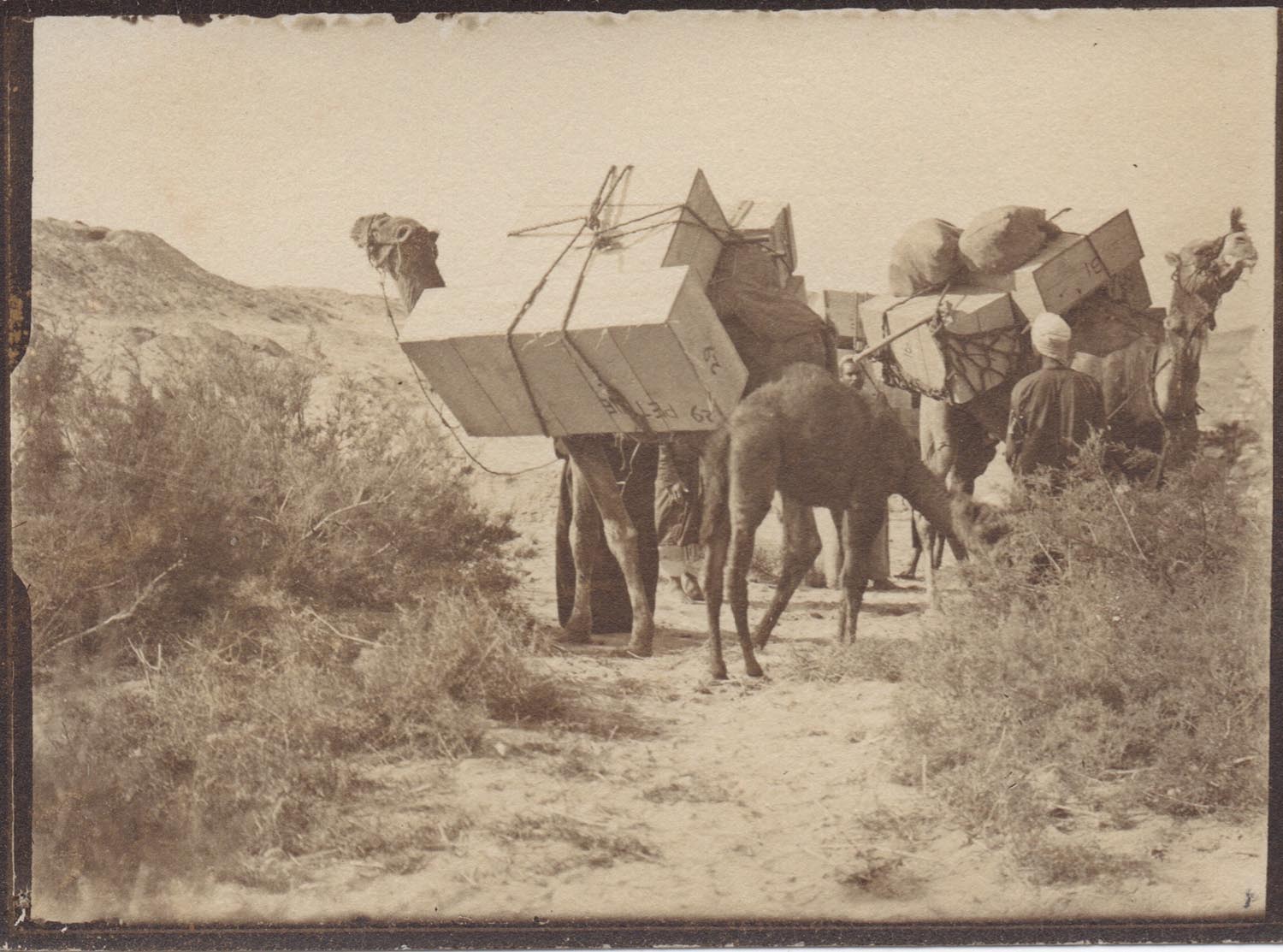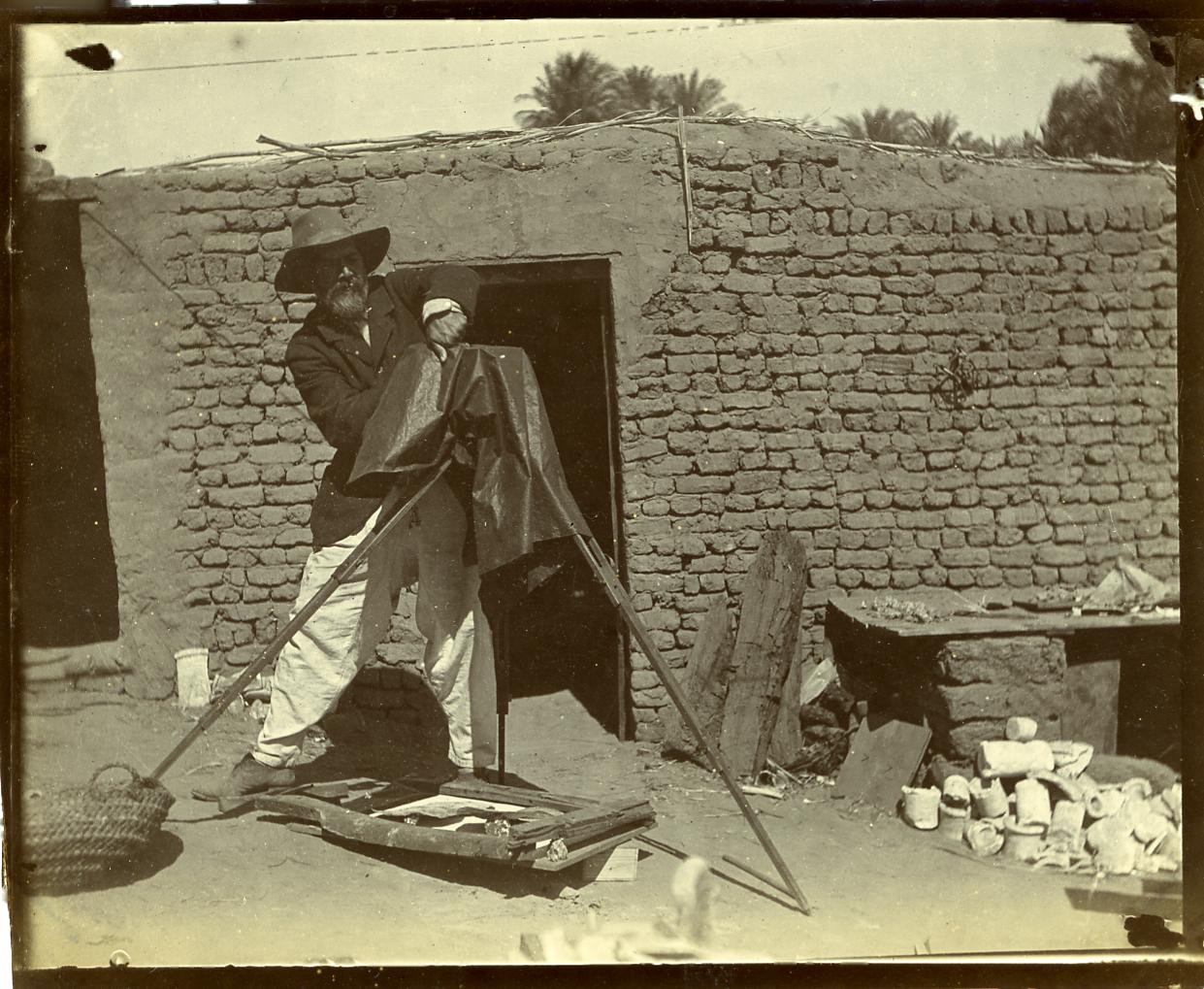

December 2019
Vol. 7, No. 12
Scattered Finds
By Alice Stevenson
Museum gallery labels are usually short, but the histories behind the objects are more complex. The benign term ‘collected’ masks a variety of routes by which antiquities travelled, and museum accounts frequently condense messy narratives into a singular accomplishment. My book, Scattered Finds: Archaeology, Egyptology and Museums, makes the many interventions embodied within collections visible. It focuses on Egyptian antiquities caught up in a massive network of financial sponsorship and patronage for British archaeological fieldwork that propelled these objects far from the cemeteries, temples and towns where they had been excavated.
From 1882 to the present day, an estimated 350 institutions across 27 countries in 5 continents received finds from British-led fieldwork in Egypt. This excludes small ‘duplicate’ items that became personal gifts, diplomatic concessions or quietly procured souvenirs. No other endeavour in world archaeology is comparable in terms of extent and scope. Just how did Egyptian objects get to be so widely dispersed to collections around the world? What was the impact of this practice on global perceptions of ancient and modern Egypt and the field of Egyptology? And how in the 21st century do we address this legacy?
The British Government, unlike the French and German, did not finance archaeological expeditions: archaeologists in the UK had to rely on private initiatives to support their work. For Egypt this began with the London-based Egypt Exploration Fund (EEF), which employed what we recognize today as ‘crowd-funding’. When the Fund was announced in The Times on 1 April 1882, it was with an enticing headline: ‘Egyptian Antiquities,’ but it concluded with the acknowledgement that ‘it must be distinctly understood that by the law of Egypt no antiquities can be removed from the country.’
Nevertheless, two years later several hundred artefacts were permitted to be exported following negotiations between the Head of the Service of Antiquities, Gaston Maspero, and the young English archaeologist, Flinders Petrie. The French-run museum in Cairo had first claim on any artefacts recovered through excavations, but the foreign excavator was permitted to export anything considered a ‘duplicate.’
 Camels loaded with crates of finds from excavations led by Flinders Petrie at Tarkhan, circa 1913. Courtesy of the Petrie Museum of Egyptian Archaeology, UCL.
Camels loaded with crates of finds from excavations led by Flinders Petrie at Tarkhan, circa 1913. Courtesy of the Petrie Museum of Egyptian Archaeology, UCL.
Partage, as this system was known, was of enormous benefit to the fledgling EEF since it could now ‘reward’ its benefactors for their support. While private persons were not officially permitted to receive finds, wealthy supporters could petition the Fund to gift finds to their local museum, while museums themselves could offer money in order to secure the best of the spoils of excavation.
At first Petrie argued for the release of small, ‘minor antiquities’ from his work at Tanis and Naukratis, but within a few years monumental works of art and substantial architectural pieces were being shipped abroad, and not just to the UK. Subscriptions to the EEF had come from institutions and individuals across the British Empire. Money also came flooding in from the USA, where there was intense interest in and competition for the best of the finds: a colossal Hathor head capital from Bubastis for the Boston Museum of Fine Arts, a limestone block from Tell Basta with the figure of a king for the University of Pennsylvania, and a set of three mummy cases from Deir el-Bahri for the Metropolitan Museum of Art. At one point even the President of the United States, Theodore Roosevelt, subscribed to the Fund.
 Relief of Nebhepetre Mentuhotep II and the Goddess Hathor, ca. 2010–2000 B.C, from Deir el-Bahri, presented by the Egypt Exploration Fund to the Metropolitan Museum of Art in 1907. (accession number 07.230.2) Public Domain CC1.0 Universal (http://www.metmuseum.org/art/collection/search/548212)
Relief of Nebhepetre Mentuhotep II and the Goddess Hathor, ca. 2010–2000 B.C, from Deir el-Bahri, presented by the Egypt Exploration Fund to the Metropolitan Museum of Art in 1907. (accession number 07.230.2) Public Domain CC1.0 Universal (http://www.metmuseum.org/art/collection/search/548212)
Between 1883 and 1915 the EEF sent antiquities to some 73 UK institutions, from large national museums like the British Museum to provincial organizations such as the McLean Museum in the Scottish seaport town of Greenock. Public libraries, universities and elite schools were also beneficiaries. More than 35 institutions in the US accepted objects, principally museums in the northeast, along with a few theological seminaries, like Rochester Theological Seminary. Globally, a further 30 museums in 13 countries received antiquities.
It is also possible to look at particular excavation seasons, such as those by John Garstang of the University of Liverpool. For the 1902–03 season at Beni Hasan, Garstang sent a five-line letter to the Editor of The Times, published under the headline ‘Gift of Egyptian Antiquities to Museums’, offering pottery to any who could pay for freight. More than 143 institutions responded, including museums in British Guiana, Jamaica, and India.
Widespread interest in ancient material was not simply because of ‘eternal fascination’ with the land of the pharaohs. Often there was little interest in the artefacts themselves: what was powerful was the act of acquisition and being able to participate in the narrative of archaeology.
Particularly notable in this context is the number of women who donated to the EEF’s cause, especially in the US following an arduous lecture tour by EEF founder, Amelia Edwards, in 1889–90. She inspired several prominent American suffragists to support the EEF’s work: Caroline Healey Dall (1822–1912), a leading nineteenth-century American reformer; Caroline Healey Dall (1822–1912) a leading nineteenth-century American reformer; Mary A. Livermore (1820–1905), the first president of the Association for Advancement of Women, and president of the American Woman Suffrage Association; and Julia Ward Howe (1819–1910), co-founder of the New England Woman Suffrage Association, and founder of the suffragist magazine Woman’s Journal. As a new discipline, Egyptology was a more accessible subject for women to study, with powerful ancient female rulers to admire. Fundraising for the EEF was equally an area open to women’s groups to mobilize their efforts, as the Chicago’s Women’s Club did enthusiastically between 1897 and 1900.
 Photograph of one of the press cuttings in Amelia Edwards scrapbook taken from the Daily Graphic 11 January 1890, showing Edwards lecturing in New York. Courtesy of the Principal and Fellows of Somerville College, Oxford.
Photograph of one of the press cuttings in Amelia Edwards scrapbook taken from the Daily Graphic 11 January 1890, showing Edwards lecturing in New York. Courtesy of the Principal and Fellows of Somerville College, Oxford.
 Shabti of Wedjahor, born of Shedet, 380–332 B.C. From Egypt, Fayum, Hawara, Tomb of Wedjahor, Petrie excavations 1888-1889. Gift of Amelia B. Edwards to the Metropolitan Museum of Art, 1890 (accession number 90.7) Public Domain CC1.0 Universal (http://www.metmuseum.org/art/collection/search/550768)
Shabti of Wedjahor, born of Shedet, 380–332 B.C. From Egypt, Fayum, Hawara, Tomb of Wedjahor, Petrie excavations 1888-1889. Gift of Amelia B. Edwards to the Metropolitan Museum of Art, 1890 (accession number 90.7) Public Domain CC1.0 Universal (http://www.metmuseum.org/art/collection/search/550768)
The extensive dispersal of finds was one of the ways in which ancient Egypt became a fixture in public expectations of what should be seen on a museum visit. Modern audience research on galleries focused on ancient Egypt has highlighted a problematic consequence of this: largely negative and dismissive views of modern Egypt amongst Western museum visitors in contrast to the reverence for its ancient (almost exclusively pharaonic) past. Challenging these deeply embedded expectations about Egypt is something that new displays of old collections will need to address, working closer with Egyptian colleagues to develop more inclusive representations of Egypt and its heritage.
 Photograph of payday at Balabish, March 1915, an excavation undertaken with the express purpose of finding material for American Museums. Courtesy of the Egypt Exploration Society (BAL.NEG.10).
Photograph of payday at Balabish, March 1915, an excavation undertaken with the express purpose of finding material for American Museums. Courtesy of the Egypt Exploration Society (BAL.NEG.10).
Scattered Finds is, therefore, not just about revealing museum and archaeological histories of greater texture or insight. It is also a call to integrate those histories into contemporary debates on who has authority over cultural materials, their interpretation and location. Museums outside of Egypt can no longer procure artefacts from the field for their collections, but antiquities excavated historically are still emerging on the art market alongside material with opaque provenance. While legal to sell today, ethically and morally the commercialization of finds is enormously problematic. In particular, the steep premiums of auctions, and the media profile of high performing sales, catalyse market demand in the developed world for the cultural property of the developing world, informing and incentivizing looting.
 Letter of thanks from James Henry Breasted to the Egypt Exploration Fund for donations of Egyptian antiquities to the Haskell Museum. Courtesy of the Egypt Exploration Society.
Letter of thanks from James Henry Breasted to the Egypt Exploration Fund for donations of Egyptian antiquities to the Haskell Museum. Courtesy of the Egypt Exploration Society.
 Flinders Petrie taking photos of objects on site at Abydos in 1900. Courtesy of the Petrie Museum of Archaeology, UCL.
Flinders Petrie taking photos of objects on site at Abydos in 1900. Courtesy of the Petrie Museum of Archaeology, UCL.
Given the spread of finds worldwide, however, there is little need for museums to continue to collect antiquities in this way. There are multi-layered and engaging histories of the people entangled with these artefacts to be discovered in already existing museum collections. Often these objects can tell us just as much about more recent times, as any ancient reality.
Alice Stevenson is Associate Professor in Museum Studies at the Institute of Archaeology, University College London. Her book Scattered Finds is available to download from UCL Press at https://www.uclpress.co.uk/products/95150.






